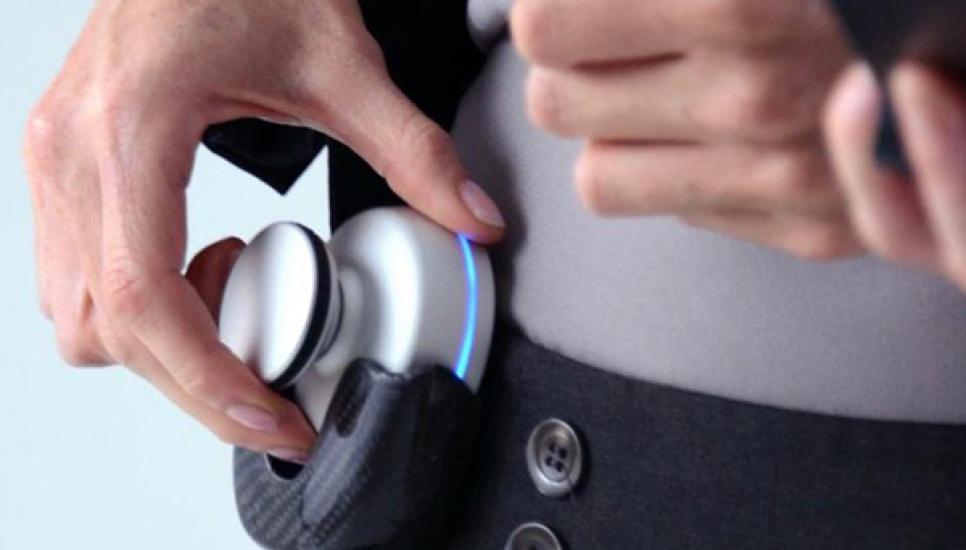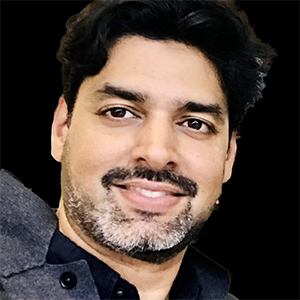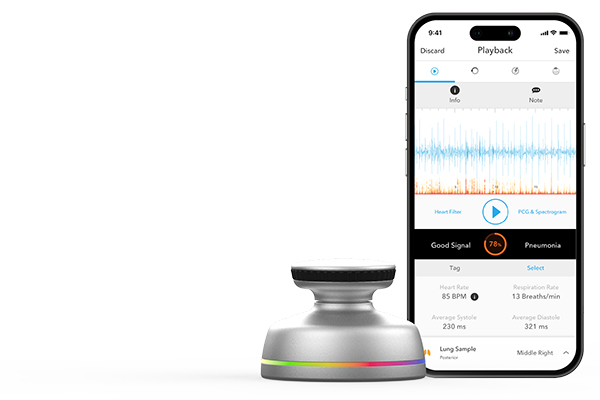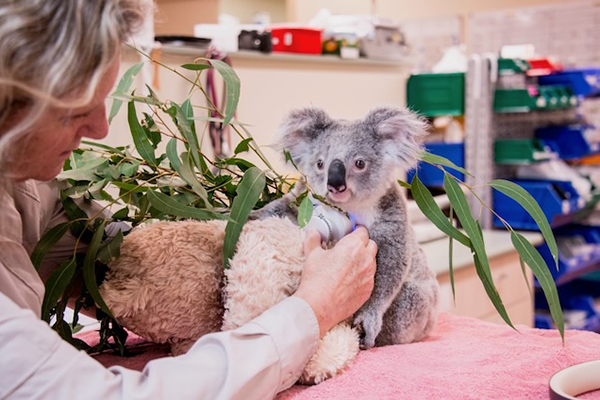Introducing the medical device that is a “game changer” in the future of digital health

The traditional stethoscope has not been improved upon for more than 200 years, but now M3DICINE, an innovative MedTech firm is introducing game-changing devices (according to the Mayo Clinic) that could see healthcare professionals forever shifting how vital sign examinations are performed.
Here, Dr Nayyar Hussain, the Brisbane-based company’s chief executive officer talks about how a background in computer science and industrial design, as well as being a qualified medical doctor, opened his eyes to the game-changing possibilities of their intelligent products...
What are the origins and aims of M3DICINE?
My brother and I founded a chain of integrative care medical centers in 2005 which were acquired by a multi-national health group in 2014. I continued to work in private practice and was listening to the heart of an eight-year-old girl with a traditional stethoscope – and then she suddenly sneezed all over me! I thought to myself that there has got to be a better way. So, by the end of 2014 we decided to create M3DICINE.
I started designing a device that could be used very easily, that you can just hand to the patient, which they could put it on their own chest, hit record and data will be automatically captured and analyzed. This was well before AI and IOT devices were mainstream.
My background is in computer science and industrial design and then I did clinical medicine, so having that engineering curiosity led me to look at what existing technology was around digital stethoscopes and vital sign analysis.
Existing devices were simply too hard to use and over-engineered. So, eventually we came up with the concept of Stethee Pro.
A group of engineering friends and I put together a prototype of the device and we started fundraising. Eventually we had outreach from Dr Mahiben Maruthappu at the CEO’s office of the NHS in the UK, they said, ‘what you're doing is very innovative, we haven't seen anything like it.’ The wireless nature of the device, the usability, the clean look, and the fact that we were doing something around algorithm development and data capture was of great appeal to them.
The NHS then organised a usability trial at Royal Brompton & Harefield Hospitals in 2016. From there, they also introduced us to Professor Sinskey at the Massachusetts Institute of Technology (MIT) in Boston who said ‘this is by far the best and most nicely executed piece of design and integration for clinical workflow that we've seen’ so they gave us full support.
After a year developing the device at MIT, we returned to Brisbane, assembled a team and put our heads together to design a beautiful product that we realised could be truly transformative..

Traditionally, stethoscopes have been seen as a status symbol for doctors. What issues have you faced changing hearts and minds?
You’re exactly right. They are a status symbol; they’ve been around for 200 years, and you see them everywhere.
To me, it's about timing. Every now and then, a global inflection moment happens (such as a pandemic or the adoption of mobile phone technology) that allows for transformation. I believe we're in that time now.
There's always pushback for innovation. When the ECG was pushed into circulation, doctors hated the device, it had 12 leads, they didn’t know where to place the leads, it was a horrible experience, also with the blood pressure machine, doctors insisted patients must come to clinics to get their blood pressure checked rather than doing it at home. Those things took time to become adopted, but the pace of diffusion and adoption is much quicker these days.
Our customers want better tools and better devices that are going to make them better healthcare professionals. So, we're excited to go out to the market with a new totally wireless option that allows healthcare professionals – including doctors, nurses, physiotherapists, remote healthcare workers and even school teachers – to have so much more functionality and diagnostic capability.
With Stethee Pro, every touch point with a healthcare professional becomes an opportunity to baseline or update a patient’s vital signs, so when a patient is admitted to hospital, they've already got an incredibly rich history of vital signs that assists clinicians in their diagnosis, treatment, and management. We have entered the age of personalized and precision medicine.
Post-COVID, there's been an explosion in remote monitoring in healthcare and home services – a company in the UK are doing 40,000 home visits per day on behalf of the NHS, which is driving the demand for devices like Stethee Pro, to provide better care diagnosis at home. Stethee Pro redefines what a stethoscope can do and offers more clinical utility and a better experience for both healthcare professional and patients.

What are the healthcare implications for the data capture?
Stethee Pro captures real-time cardiac and respiratory data in just 20 seconds, that's been validated by the US-FDA, Europe CE and Australian TGA. Every sample also contains geolocation and environmental details – including wind speed, temperature, pollen count etc. So we capture a very unique set of data, to identify where people are experiencing cardiac or respiratory disease in real-time across the world, effectively the real-time vital signs of the planet. This data is valuable for public health, governments, research and education, pharma, and insurance.
This data can be used to provide patterns and insights back to our customers. For example, if some hospitals are interested to know what percentage of, say, 45- to-50-year-old patients are experiencing cardiac valve disease in a certain city or location, or who are taking a certain type of medication, we can produce that data.
We comply with all the European, US and Australian data privacy requirements for healthcare data, we take that very seriously.

Are there any other potential uses for the solution?
As we are a vital signs company, the data itself is obviously a large revenue stream. We are developing a device that look at the face, eyes, ears, nose, throat, and skin. We will have a suite of devices, so it will be a multi-device company all focused on capturing real-time vital sign data.
The other opportunity we have is a revolutionary product called the Stethee Vet. There are no digital stethoscopes designed for vets by vets, so we have a product that will allow vets and pet owners to manage the health of their animals in clinic or at home. We have worked with the Steve Irwin Zoo in Australia to capture samples and design algorithms for a range of animals and it’s proving to be a wonderful product that potentially is a great revenue generator, because there's no regulatory control – we can sell this product all around the world to any country, any veterinarian, or any pet lover.
For more information on M3DICINE, click here.
M3DICINE will exclusively present in-person as Campden Wealth returns to Lausanne, Switzerland, for the 33rd edition of the MedTech Investing Europe Forum (MTi) on June 27 and 28.
For further information, contact Kevin Grant via kevingrant@campdenwealth.com.
Campden Wealth is not an investment advisory service and is not a registered investment adviser or broker/dealer and has performed no due diligence and does not endorse any investment services, strategies or managers listed in Managerlink or at any other Campden Wealth event. You should perform your own extensive due diligence.






